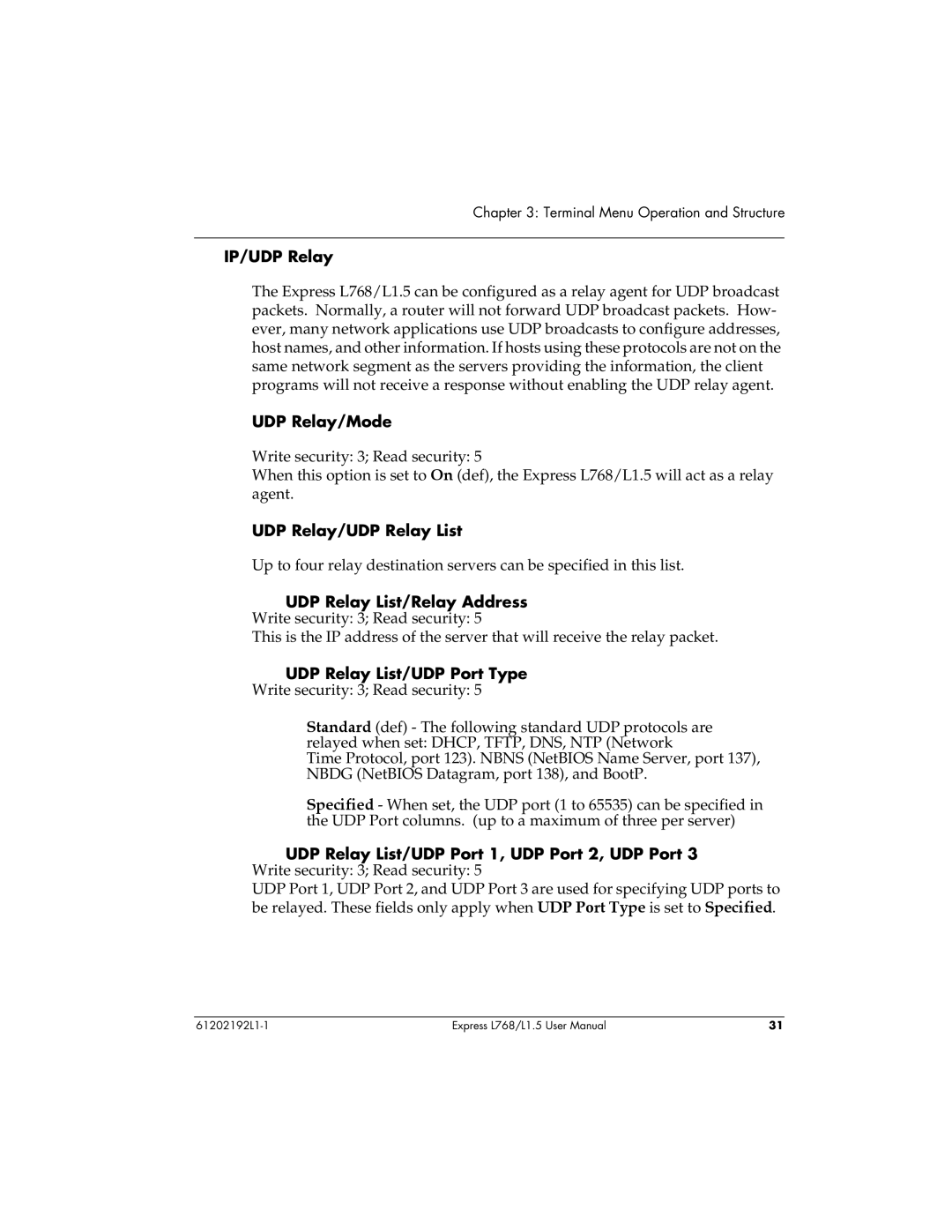
Chapter 3: Terminal Menu Operation and Structure
IP/UDP Relay
The Express L768/L1.5 can be configured as a relay agent for UDP broadcast packets. Normally, a router will not forward UDP broadcast packets. How- ever, many network applications use UDP broadcasts to configure addresses, host names, and other information. If hosts using these protocols are not on the same network segment as the servers providing the information, the client programs will not receive a response without enabling the UDP relay agent.
UDP Relay/Mode
Write security: 3; Read security: 5
When this option is set to On (def), the Express L768/L1.5 will act as a relay agent.
UDP Relay/UDP Relay List
Up to four relay destination servers can be specified in this list.
UDP Relay List/Relay Address Write security: 3; Read security: 5
This is the IP address of the server that will receive the relay packet.
UDP Relay List/UDP Port Type
Write security: 3; Read security: 5
Standard (def) - The following standard UDP protocols are relayed when set: DHCP, TFTP, DNS, NTP (Network
Time Protocol, port 123). NBNS (NetBIOS Name Server, port 137), NBDG (NetBIOS Datagram, port 138), and BootP.
Specified - When set, the UDP port (1 to 65535) can be specified in the UDP Port columns. (up to a maximum of three per server)
UDP Relay List/UDP Port 1, UDP Port 2, UDP Port 3 Write security: 3; Read security: 5
UDP Port 1, UDP Port 2, and UDP Port 3 are used for specifying UDP ports to be relayed. These fields only apply when UDP Port Type is set to Specified.
Express L768/L1.5 User Manual | 31 |
